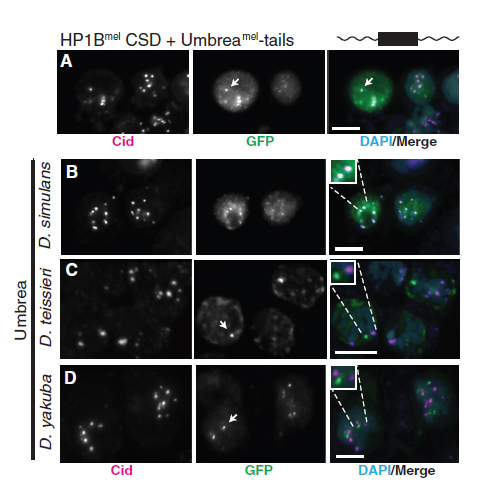Stepwise Evolution of Essential Centromere Function in a Drosophila Neogene
07-Jun-2013
Science, 2013, DOI: 10.1126/science.1234393, Vol. 340 no. 6137 pp. 1211-1214 published on 07.06.2013
Science, online article
Science, online article
Evolutionarily young genes that serve essential functions represent a paradox; they must perform a function that either was not required until after their birth or was redundant with another gene. How young genes rapidly acquire essential function is largely unknown. We traced the evolutionary steps by which the Drosophila gene Umbrea acquired an essential role in chromosome segregation in D. melanogaster since the gene's origin less than 15 million years ago. Umbrea neofunctionalization occurred via loss of an ancestral heterochromatin-localizing domain, followed by alterations that rewired its protein interaction network and led to species-specific centromere localization. Our evolutionary cell biology approach provides temporal and mechanistic detail about how young genes gain essential function. Such innovations may constantly alter the repertoire of centromeric proteins in eukaryotes.











